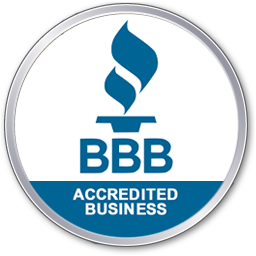As winter nears and temperatures drop, Americans are preparing for the onslaught of high energy prices waiting to hit their doors. The U.S. Energy Information Administration (EIA) is projecting a sharp increase in prices for homes this year, driven by the colder temperatures, higher demand, and price hikes.
These prices are likely to cause widespread hardship as families struggle to keep warm and pay their bills, which may lead to increased poverty and even homelessness. Fortunately, there are a few tips for winterizing your home this year to help keep energy costs under control and you and your loved ones warm.
1. Clean the Gutters
The first step to winterizing your home is to prevent ice dams by cleaning out your gutters. As autumn ends, check your gutters for any stray leaves to prevent moisture from building up. This helps avoid water leaking into your walls and cracks in your foundation.
You may also want to consider installing gutter guards and double-checking to ensure that your attic is adequately insulated and ventilated.
2. Protect Your Pipes
The next step is to protect your home against frozen pipes. When the temperature drops below freezing, keep a few faucets running to protect against pipes freezing and bursting.
You can also insulate the pipes under your bathroom and kitchen sinks and open the cabinet doors so your indoor heating can reach the pipes.
3. Caulk Around Windows, Doors, or Other Drafty Areas
The EPA estimates that homeowners can save 15 percent on average on energy bills by sealing and insulating drafty areas.
This includes caulking holes and any openings around HVAC systems, mail chutes, doors, and windows. This helps prevent cold air from seeping in and expensive heating from seeping out.
4. Add Weather Stripping to Doors and Windows
Adding weather stripping around the frame of your windows and doors will help stop thermal leakage. This can be done yourself or with professional assistance. It can also help to install storm windows or coverings.
Double-paned windows can help protect against air infiltration and condensation, as well as reduce energy bills. You can also purchase plastic or fabric coverings to place over your windows for added insulation and protection.
5. Get the Heating System Checked
Before the cold from this colder-than-average winter hits, get your heating system checked to ensure it’s properly maintained and running efficiently. The last thing you need is for the heating system to give out when it’s -30°F outside.
If you don’t have a thermostat, consider working with a professional to have one installed to recirculate warm air and set intervals. If you have one installed, consider lowering the temperature by 10 to 15 degrees at night. Additionally, you can also upgrade to a smart thermostat which can be programmed to manage your heating and cooling system based on when you’re home or away.
The air filter in your home’s heating system should also be changed to maximize efficiency and reduce energy costs. A dirty filter restricts airflow, causing your system to use more energy than necessary to keep your space warm.
Some filters can be cleaned and reused, but others may require replacing. Make sure you follow the manufacturer’s instructions when changing out the filter, as each system may be different.
Also, you may want to consider investing in a high-efficiency filter to reduce the need for frequent changes and help protect against airborne particles.
6. Test Smoke and Carbon Monoxide Monitors
Testing smoke and carbon monoxide monitors are especially important during the winter months. This is because colder temperatures make us use gas more often, which can lead to an increased risk of fire or carbon monoxide poisoning.
Smoke detectors are designed to detect the presence of smoke particles in the air and sound an alarm when they detect a certain level of smoke in the atmosphere. Unfortunately, many homeowners forget to check and replace smoke detectors when necessary.
It’s recommended that you test your smoke alarms at least once a month, as well as change out the batteries twice a year.
7. Stow Away Outdoor Hoses
Stowing away outdoor hoses during the winter season is an essential part of winterizing your home. Winter temperatures can cause outdoor hoses to freeze and back up into your pipes, leading to floods or water damage.
Additionally, hoses made of rubber and vinyl can also become brittle and crack in cold weather. Stowing away hoses is more than throwing them in the shed. Be sure to drain them before storing them away.
And if you’re heading out of town, take extra precautions and turn your water completely off or drain your plumbing system to prevent freezing. It also helps to have friends or neighbors check on your home regularly for any problems to minimize costly damages.
8. Inspect Your Roof
If you’ve put off inspecting your roof all year, you’ll want to work with a professional to inspect and fix the issues before the winter weather arrives in full force. Winter brings snow, ice, and wind—all of which can cause significant problems and damage to your roof.
Professionals can check each shingle and flashing and inspect all the valleys and sealants on the vents. Once you get the initial inspection and fixes complete, be sure to inspect your roof throughout the season for signs of wear or damage from heavy snowfall or ice buildup.
9. Winterize Your Fireplace
If you have a fireplace, it’s important to get it ready before the cold weather sets in. This includes getting a chimney inspection and sweeping out the ashes and creosote buildup before using the fireplace.
You may want to consider investing in tempered glass doors for your fireplace to ensure that warm air stays in and cold air stays out. Winterizing your home is essential for saving on energy costs and keeping everyone safe and comfortable throughout the season.
By following these tips, you can enjoy a warm and cozy winter without breaking the bank.
Remember to keep up with regular maintenance throughout the season, as this will help you avoid any unexpected problems or costly repairs.
Winterizing your home can be a bit of an undertaking, but it’s well worth it for the peace of mind and cost savings that come along with it.
Stay warm and enjoy this holiday season with these top tips for winterizing your home!




